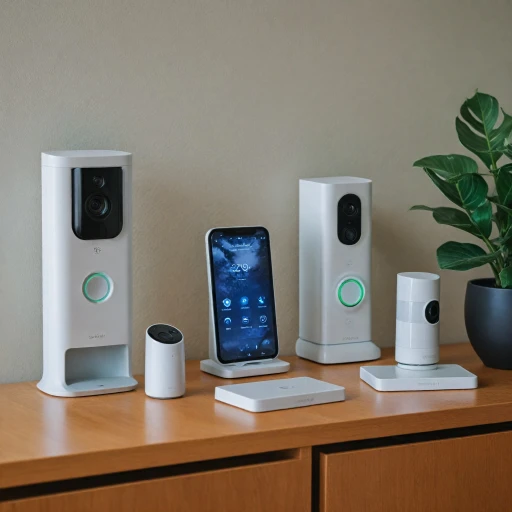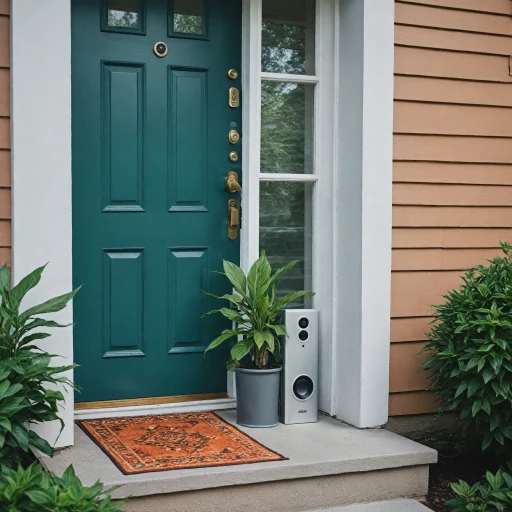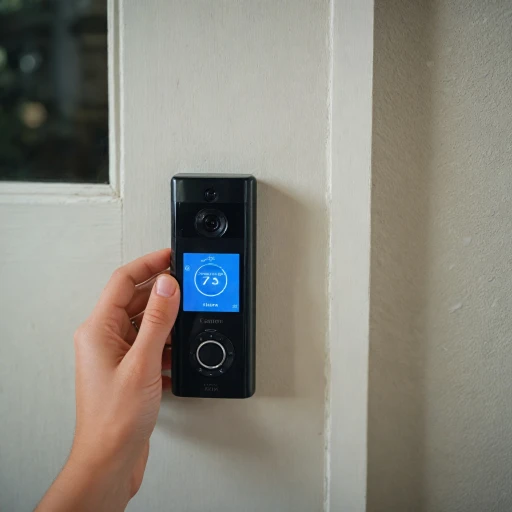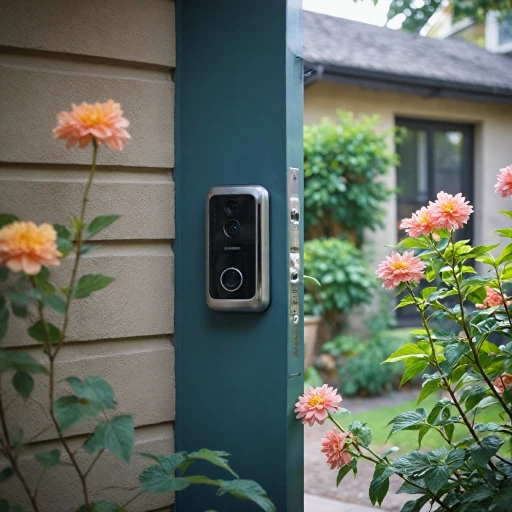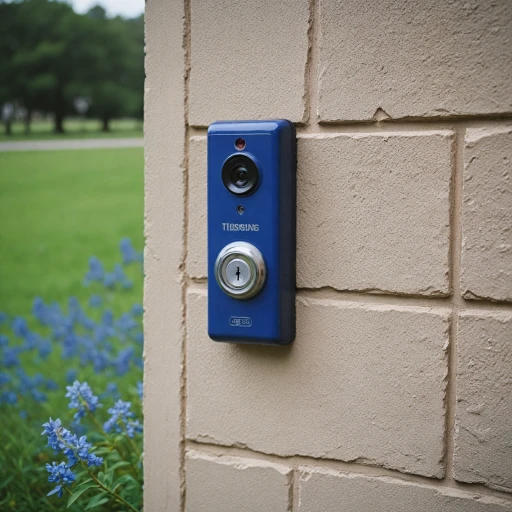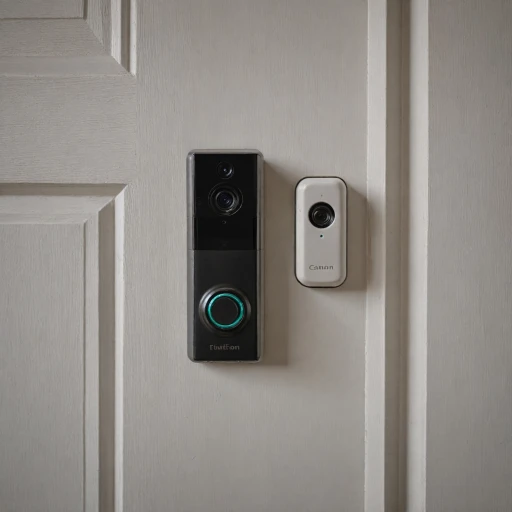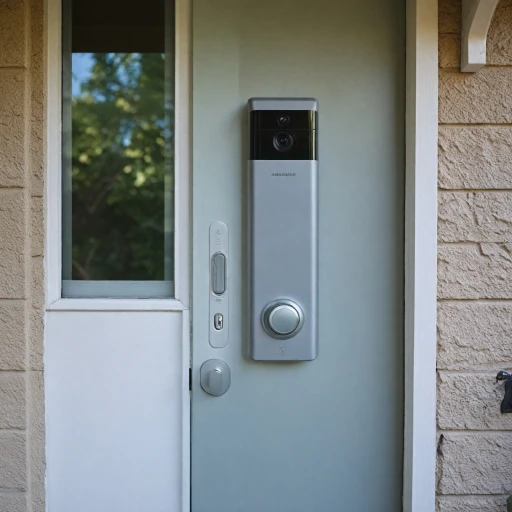
Understanding Your Ring Doorbell
Decoding Your Smart Doorbell
To make informed decisions about your Ring device, it's essential to grasp what you're working with. Your Ring doorbell is more than just a device; it's a smart security system designed to enhance the safety of your front door. Equipped with motion detection features, video capabilities, and real-time alert systems, it provides a comprehensive view of your property's first line of defense. The Ring doorbell family offers a range of products, including the Ring Pro and Doorbell Pro, each tailored to different needs, from high-definition video and enhanced motion detection to the seamless integration with the Ring app for live view or video replay. Choosing the right product often hinges on factors like wired vs. wireless, levels of detection sensitivity, and desired features like the Ring chime accessory or the doorbell camera’s field of view. Understanding these elements is crucial as it will affect how you might manage your device's settings, including the step-by-step guide to disabling it, should the need arise. Having knowledge about the functionality of both your doorbell and the Ring app will prepare you for troubleshooting any common issues that may occur and exploring alternative solutions for security monitoring beyond just switching off your security camera. For those who wish to explore further or need more detailed insights, consider visiting a comprehensive guide on understanding the Ring doorbell. This resource can deepen your comprehension of the device's capabilities and applications, enabling a more tailored usage experience.Reasons to Turn Off Your Ring Doorbell
Why You Might Want to Turn Off Your Ring Doorbell
The demand for flexibility in managing your Ring doorbell is understandable, given its array of features. However, there are several scenarios where you might consider disabling the device. Here are compelling reasons that could drive this decision:
- Privacy Concerns: With its real-time video capabilities, the Ring camera continually monitors motion. This constant surveillance might feel intrusive, especially if you're worried about the privacy of your family or visitors.
- Security Implications: While the Ring device enhances security, you may encounter situations where temporary disablement serves better security interests, such as when conducting home renovations or when hosting multiple guests.
- Reducing Notifications: The Ring app sends alerts for every movement at your front door. If you've reached a limit with these notifications or experience frequent false alarms, turning off the device might be your next course of action.
- Saving on Power and Resources: Whether it's a wired or battery-powered model, your Ring doorbell's motion detection and live view features consume considerable power. Disabling it can help conserve energy and reduce costs associated with power usage.
Each reason presents its own justification for disablement and should be weighed based on your specific context and needs. Understanding these motives will aid in making an informed decision when it comes to managing your device effectively.
Step-by-Step Guide to Turning Off Your Ring Doorbell
Disabling Your Ring Device: A Step-by-Step Guide
When you've determined that disabling your Ring doorbell is the best option, follow this straightforward guide to ensure the process is smooth and effective:
Access the Ring App
- Begin by opening the Ring app on your smartphone or tablet. This app is your portal to managing all settings related to your Ring device, from motion detection to video storage.
Navigate to Device Settings
- Once inside the app, locate and select your specific Ring doorbell or security camera. This is typically labeled with the name you assigned, such as "Front Door" or "Back Porch." Tapping on it will take you to the device overview.
- Check that you're connected to a stable wifi network to ensure changes are saved promptly.
Adjust Motion and Video Settings
- Within device settings, look for motion detection and video recording settings. You can temporarily disable these features to prevent your Ring device from capturing any new footage or sending notifications.
- Keep in mind that turning off these features will impact your ability to view real-time footage and past videos.
Power Off the Device
- If your doorbell is wired, you may need to cut the power from the main source. For battery-operated models, simply removing the battery will suffice.
- Note that powering down will render the chime, camera, and any associated Ring chime products inoperative until power is restored.
Review Your Ring Plan
- Learn about how these changes might affect your Ring plan. Disabling features won't necessarily pause your subscription, so review your account settings accordingly.
These steps will guide you through the process of disabling your Ring video doorbell safely and effectively, ensuring you maintain control over your home security camera system.
Impact of Disabling Your Ring Doorbell
Consequences of Deactivating Your Ring Device
Turning off your Ring doorbell significantly impacts how you monitor your property's security. While a temporarily disabled Ring can be beneficial for certain reasons, it's important to consider the consequences.
Loss of Motion Detection and Alerts
When you deactivate the Ring camera, the device stops functioning as a security camera, meaning motion detection capabilities are halted. This results in the lack of motion alerts sent to your Ring app whenever movement is detected at your door.
No Video Capture or Live View
With the Ring video function disabled, storage of video footage, such as events at the front door or activity caught by your doorbell camera, ceases. Moreover, the live view option, allowing you to see real-time views via the app, becomes unavailable.
Impact on Connected Devices
If you've integrated other Ring products or additional features such as the Ring Pro or Ring Chime, they may also stop operating as expected. As these devices often function in a network, disabling one component affects the others, thereby reducing the overall efficiency of your home security system.
Security Vulnerabilities
The absence of security-related video capture and motion detection transforms your front door into a less secure entry point. This can prove detrimental if you heavily rely on the doorbell for security purposes. Maintain awareness of these vulnerabilities when deciding to disable your device.
When considering security efficacy, recognizing how turning off your Ring device alters your ability to monitor your home can be critical. Ensure your decision factors in both security needs and any necessary adjustments to ensure continued protection.
Alternative Solutions to Disabling
Finding Alternatives for Your Ring Doorbell
If you've mulled over turning off your Ring doorbell, considering alternative strategies might help you achieve the desired level of control without sacrificing security. Here are some suggestions you may find helpful:- Adjust Motion Settings: If motion detection alerts are frequent or disruptive, tweaking these settings might be a more refined solution. Through the Ring app, you can select the zones and sensitivity levels for motion alerts, providing a tailored experience that reduces unwanted notifications.
- Disable Notifications Temporarily: If you're seeking a short-term break from constant alerts, the app allows you to snooze notifications. This feature is perfect when you need peace without offline security.
- Utilize Privacy Zones: If privacy is a concern, consider setting up privacy zones on your Ring camera. This option allows you to effectively black out certain areas from video recordings, preventing those regions from being monitored or recorded.
- Control the Power Source: While turning off the device might seem straightforward, simply using the power button can manage your Ring doorbell without fully disabling it. Wired users might adjust power via the breaker or switch to manage operation times.
- Invest in Ring Accessories: Consider enhancing your setup with accessories such as a Ring Chime. This product can help you manage the device’s alerts and sounds more effectively while providing a distinct separation from your phone's notifications.
Troubleshooting Common Issues
Resolving Challenges When Disabling the Device
Disabling your Ring doorbell might seem straightforward, but sometimes unexpected issues can occur. Here are some common problems and their solutions to ensure a seamless experience:- Power Issues: If your Ring device is retaining power despite being turned off, ensure the doorbell is correctly disconnected from its power source, whether it's a wired setup or battery-powered. If wired, double-check the power switch or circuit breaker related to your device.
- Intermittent Connections: Even when disabled, some devices maintain a connection due to redundant settings on the Ring app. A quick fix could be uninstalling the app from your smartphone and reinstalling it after ensuring the device is inactive.
- Persistent Motion Detection Alerts: Occasionally, motion detection settings might not disengage immediately. Confirm that the motion detection feature is completely off in both the app and the device settings.
- Unexpected Ring Chimes: Ensure that all chimes interacting with the device are also powered down or disconnected. Sometimes linked devices might operate due to previous configurations.

